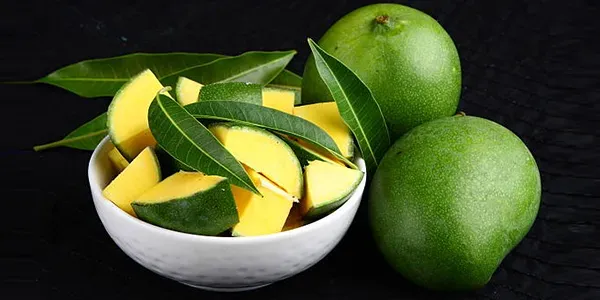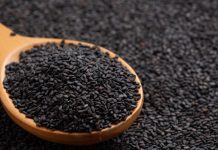Mango Leaves Benefits
Mango leaves have been traditionally used in some cultures as a natural remedy for diabetes, and there is some scientific evidence to suggest that they may offer potential benefits for people with diabetes. The compounds found in mango leaves may have potential anti-diabetic properties, which can help manage blood sugar levels and so on. Here are some benefits of mango leaves for diabetes.
Regulates Blood Sugar Levels
Studies have shown that mango leaves may help lower blood sugar levels. They contain bioactive compounds like mangiferin and quercetin which have anti-hyperglamic properties that help in regulating insulin levels and reducing blood sugar spikes.
Improves Insulin Function
Studies suggest that mango leaves improve insulin function by increasing the secretion and reducing insulin resistance. Insulin is the hormone that regulates blood sugar levels, and improved insulin function can help manage diabetes.
Lowers Cholesterol Levels
High cholesterol levels are a common problem in people with diabetes. Studies have found that mango leaves can help lower cholesterol levels, thus reducing the risk of heart disease and other complications associated with diabetes.
Reduces Inflammation
Mango leaves contain anti-inflammatory compounds that can help reduce inflammation, which is a common problem in people with diabetes. Chronic inflammation can lead to insulin resistance and other complications, and reducing inflammation can improve overall health.
Boosts Immunity
They are rich in antioxidants, which can protect the body’s cells from damage caused by oxidative stress. Antioxidants can also help boost the immune system and be beneficial for people with diabetes, as they are at an increased risk of oxidative damage. This can help prevent infections and other health problems that are more common in people with diabetes.
Weight Management
Mango leaves may aid in weight management due to their high fiber content. Maintaining a healthy weight is crucial for diabetes. Though diabetic drugs such as semaglutide help obese people reduce weight, it is essential to follow proper diet and lifestyle to manage diabetes on the whole.
Is Mango Leaf Good for a Diabetes?
While there is promising research regarding the potential benefits of mango leaves for diabetes, it’s important to consult with a healthcare professional before incorporating them into your diabetes management plan. They can guide how to use mango leaves safely and effectively based on your individual health needs.
How to Take Mango Leaves for Diabetes?

Here are some ways to take mango leaves for diabetes
Mango Leaf Tea
- Boil 10-15 fresh mango leaves in water for 15 minutes.
- Strain the tea and allow it to cool.
- Drink a cup of mango leaf tea in the morning and another in the evening.
Mango Leaf Powder
- Dry the leaves and grind them into a fine powder.
- Mix 1-2 teaspoons of mango leaf powder in a glass of water or juice.
- Drink this mixture twice a day.
Mango Leaf Extract
- Mango leaf extract is available in capsule form in health food stores.
- Follow the instructions on the package for the recommended dosage.
Mango Leaf Infused Water
- Add fresh leaves to a jug of water and allow it to infuse overnight.
- Drink this water throughout the day.
Mango Leaf Tincture
- Mango leaf tincture is available in health food stores.
- Follow the instructions on the package for the recommended dosage.
These are some ideas on how to eat mango leaves for diabetes. Read further to know the complete recipe on how to make mango leaves tea. Having said that, it’s important to note that while mango leaves may have potential anti-diabetic properties, they should not be used as a substitute for prescribed medications or a healthy lifestyle.
Also, read 5 fruits to avoid if you have diabetes.
How Mango Leaves Cure Diabetes?
Mango leaves have been traditionally used in some cultures as a remedy for diabetes, but scientific evidence supporting their effectiveness is limited. They contain bioactive compounds like polyphenols, flavonoids, and triterpenoids, which have potential antioxidant and anti-inflammatory properties.
Some studies suggest they may have hypoglycemic effects, but more research is needed to establish their efficacy in humans. Animal studies have shown promising results, but human studies are limited. The specific mechanisms by which mango leaves may exert antidiabetic effects are not yet fully understood.
They are generally safe for consumption, but some individuals may experience allergic reactions or gastrointestinal discomfort. Consult a healthcare professional before using mango leaves for diabetes, especially if you are already taking medication or have an underlying medical condition.
Mango leaves should not be considered a substitute for prescribed diabetes medication or lifestyle modifications but can be used as a complementary approach under medical supervision.
How to Make Mango Leaves Tea to Fight Diabetes?
Drinking mango-leaf tea may help manage blood sugar levels, boost immunity, and promote weight loss. You can understand the health benefits of drinking mango leaf tea as it has been consumed for centuries. Here is how to make mango leaf tea with just a few ingredients.
Ingredients
- 10-12 fresh mango leaves
- 2 cups of water
- Honey or maple syrup to taste (optional)
Instructions
- Wash the leaves thoroughly.
- Tear the leaves into small pieces.
- Add the leaves and water to a saucepan.
- Bring the water to a boil.
- Reduce the heat to low and simmer for 5-7 minutes, or until the tea has a deep green color.
- Strain the tea into a cup.
- Add honey or maple syrup to taste (optional).



















